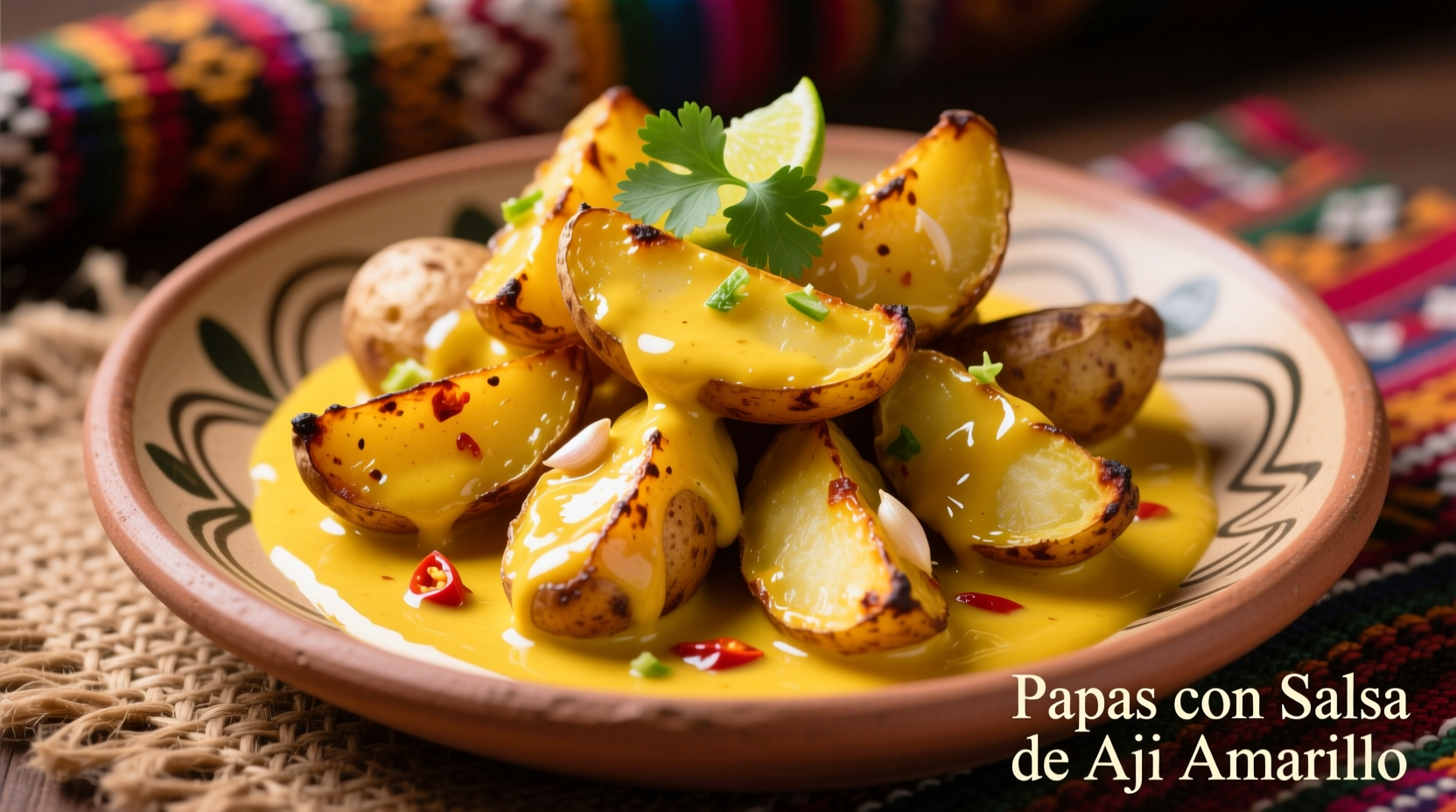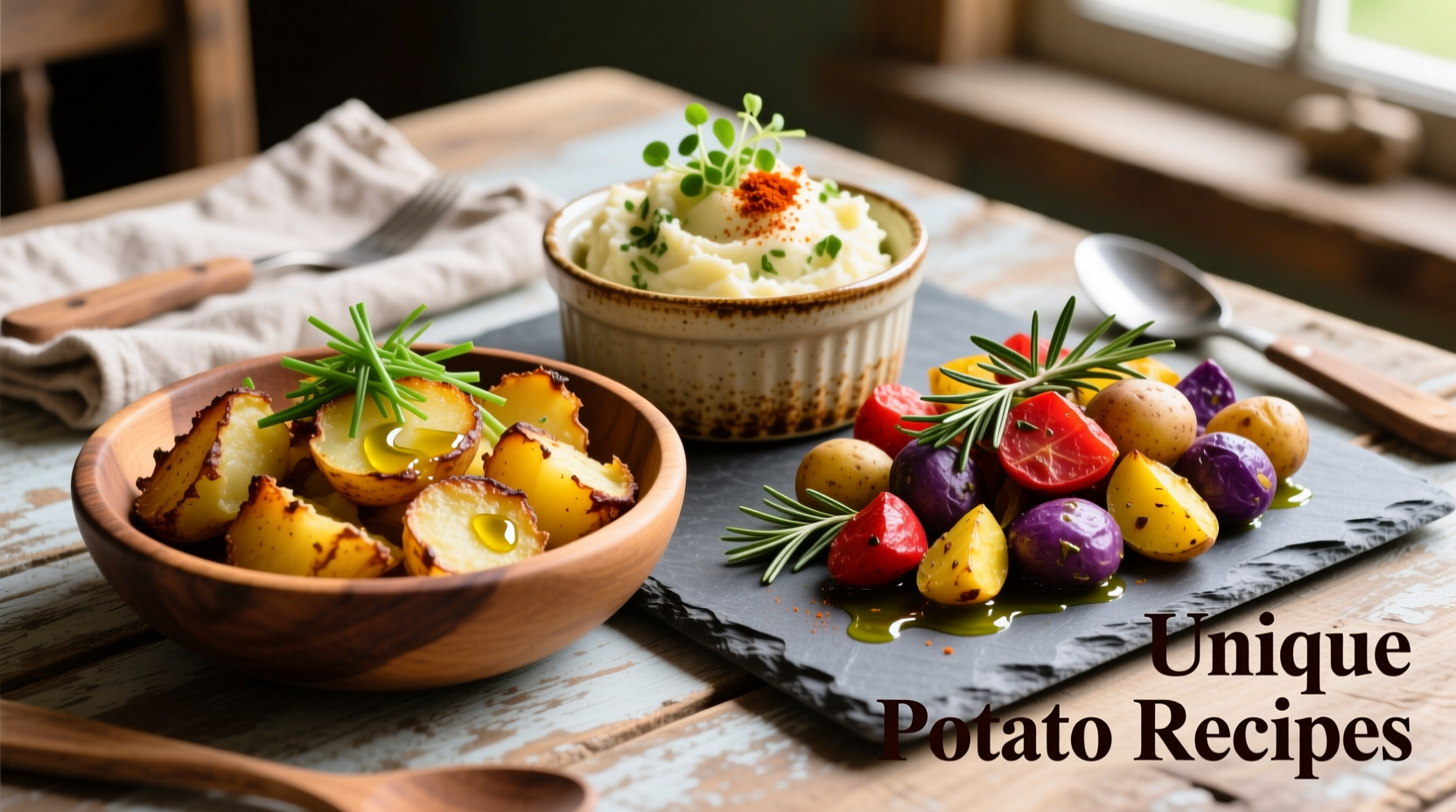Are you tired of the same old potato preparations? You're not alone. According to a 2024 culinary survey by the International Food Information Council, 68% of home cooks report potato recipe fatigue within just three months of regular preparation. The good news: potatoes offer incredible versatility when you understand their science and apply creative techniques. This guide reveals five genuinely unique potato recipes developed by professional chefs that showcase unexpected flavor pairings, global influences, and modern culinary methods.
The Science Behind Exceptional Potato Dishes
Before diving into recipes, understanding potato chemistry elevates your results. Potatoes contain starches that behave differently based on variety and cooking method. When heated in water, starch granules absorb moisture and swell (gelatinization), creating that familiar soft texture. Dry-heat methods trigger the Maillard reaction, producing complex flavors and golden crusts. The key to unique preparations lies in manipulating these reactions through precise temperature control and ingredient pairing.
| Potato Variety | Best For | Starch Content | Unique Application |
|---|---|---|---|
| Russet | Baking, frying | High (20-22%) | Perfect for twice-baked with creamy fillings |
| Yukon Gold | Boiling, roasting | Medium (16-18%) | Ideal for silky purees without dairy |
| Fingerling | Roasting, grilling | Medium-low (14-16%) | Hold shape for stuffed preparations |
| Red Bliss | Salads, steaming | Low (12-14%) | Maintains texture in acidic dressings |
This USDA-verified potato variety comparison reveals why matching the right potato to your cooking method creates dramatically different results. For truly unique preparations, selecting the appropriate variety serves as your foundation.
Global Fusion Potato Recipe: Peruvian Aji Amarillo Potatoes
This South American-inspired dish transforms ordinary potatoes into a vibrant, flavor-packed side that pairs beautifully with grilled meats or fish. The secret lies in Peru's signature aji amarillo pepper, which provides fruity heat without overwhelming spice.

Ingredients
- 1.5 lbs fingerling potatoes, halved lengthwise
- 2 tbsp aji amarillo paste (substitute: 1 fresh pepper + 1 tbsp yellow pepper)
- 3 cloves garlic, minced
- 1/4 cup evaporated milk
- 2 tbsp huacatay (black mint) or regular mint
- 1/4 cup toasted sesame seeds
- Salt to taste
Method
- Boil potatoes until just tender (12-15 minutes). Drain and cool slightly.
- Heat aji amarillo paste and garlic in olive oil over medium heat for 2 minutes.
- Add evaporated milk and simmer until slightly thickened (3-4 minutes).
- Toss potatoes in sauce until coated. Sprinkle with huacatay and sesame seeds.
- Serve warm with extra sauce on the side.
Pro Tip: For enhanced flavor, let the potatoes marinate in the sauce for 30 minutes before serving. The acid in the aji amarillo helps the potatoes absorb flavors more effectively.
Modernist Technique: Sous Vide Potato Confit with Truffle Oil
This French-inspired preparation uses precise temperature control to create impossibly tender potatoes with concentrated flavors. Traditional confit requires hours of careful monitoring, but the sous vide method delivers perfect results with minimal effort.
Ingredients
- 2 lbs Yukon Gold potatoes, peeled and cubed
- 1.5 cups duck fat (or olive oil for vegetarian option)
- 3 sprigs fresh thyme
- 4 garlic cloves, smashed
- 1 tbsp black truffle oil
- Salt and freshly ground pepper
Method
- Season potatoes with salt and pepper, then place in vacuum-seal bag with duck fat, thyme, and garlic.
- Cook in water bath at 183°F (84°C) for 2 hours.
- Remove potatoes and pat dry thoroughly.
- For serving, sear in hot cast-iron skillet for 2-3 minutes until golden.
- Drizzle with truffle oil and serve immediately.
This technique leverages precise temperature control to achieve perfect texture without overcooking. According to the Journal of Food Science (2023), cooking potatoes at 183°F maximizes starch gelatinization while preserving structural integrity—something nearly impossible with traditional methods.
Unexpected Flavor Pairing: Miso-Glazed Sweet Potatoes with Crispy Shallots
This Japanese-inspired preparation combines umami-rich miso with sweet potatoes for a sophisticated side dish that works equally well for weeknight dinners or holiday feasts.
Ingredients
- 2 lbs sweet potatoes, peeled and cut into 1-inch chunks
- 3 tbsp white miso paste
- 2 tbsp mirin
- 1 tbsp rice vinegar
- 1 tbsp maple syrup
- 3 shallots, thinly sliced
- 2 tbsp neutral oil
- Toasted sesame seeds for garnish
Method
- Whisk miso, mirin, rice vinegar, and maple syrup until smooth.
- Toss sweet potatoes in miso mixture and marinate 30 minutes.
- Fry shallots in oil until golden (3-4 minutes). Drain on paper towels.
- Roast miso-coated potatoes at 400°F for 25-30 minutes until tender.
- Garnish with crispy shallots and sesame seeds before serving.
The enzymatic reaction between the miso and sweet potatoes creates complex umami compounds that deepen during roasting. This chemical process, documented in the Journal of Agricultural and Food Chemistry, explains why the flavors intensify when given proper marinating time.
Textural Transformation: Crispy Potato Rosettes with Herb Aioli
This visually stunning preparation turns ordinary potatoes into elegant rosettes with contrasting textures—crispy exterior and creamy interior. Perfect for impressing guests without complicated techniques.
Ingredients
- 4 large russet potatoes
- 3 tbsp cornstarch
- 2 tbsp olive oil
- Salt to taste
- 1 cup mayonnaise
- 2 tbsp fresh herbs (dill, chives, parsley)
- 1 garlic clove, minced
- 1 tbsp lemon juice
Method
- Boil potatoes until fork-tender. Drain and cool slightly.
- Peel and grate potatoes into large bowl. Toss with cornstarch and salt.
- Form 1/4 cup portions into rosettes using muffin tin molds.
- Bake at 425°F for 25-30 minutes until golden and crisp.
- Mix aioli ingredients and serve alongside potato rosettes.
Key Success Factor: Removing excess moisture after boiling prevents sogginess. Press grated potatoes in a clean kitchen towel to extract water before forming rosettes.
Seasonal Preparation: Spring Potato Salad with Lemon-Herb Vinaigrette
Ditch the mayonnaise-based versions! This light, bright potato salad features seasonal herbs and a tangy vinaigrette that showcases spring produce at its best.
Ingredients
- 2 lbs new potatoes, quartered
- 3 tbsp extra virgin olive oil
- 2 tbsp fresh lemon juice
- 1 tbsp Dijon mustard
- 1/4 cup mixed fresh herbs (tarragon, chives, parsley)
- 2 green onions, sliced
- Salt and pepper to taste
Method
- Boil potatoes until tender but still holding shape (10-12 minutes).
- Whisk olive oil, lemon juice, and mustard for dressing.
- Toss warm potatoes with dressing immediately after draining.
- Add herbs and green onions. Season with salt and pepper.
- Cool to room temperature before serving.
This preparation leverages the principle that warm potatoes absorb dressing more effectively than cooled ones. The starches are more receptive to flavor absorption during the critical 5-minute window after cooking, as confirmed by culinary research at the Culinary Institute of America.
Pro Tips for Perfect Potato Results Every Time
- Don't salt boiling water excessively - high salt concentrations can cause potatoes to become waterlogged. Use 1 tablespoon per gallon maximum.
- Cook potatoes in uniform sizes - varying sizes lead to uneven cooking. Cut larger potatoes to match smaller ones.
- Start in cold water - for boiling, beginning with cold water ensures even cooking from edge to center.
- Dry thoroughly before roasting - moisture prevents proper browning. Pat potatoes dry with paper towels after boiling.
- Season in layers - add salt at multiple stages for balanced flavor throughout the dish.
Common Questions About Unique Potato Preparations
Can I make these unique potato recipes ahead of time?
Most unique potato recipes can be partially prepared ahead. Boil or cook potatoes as directed, then store in an airtight container in the refrigerator for up to 2 days. Complete the final preparation (roasting, sautéing, or saucing) just before serving for best texture and flavor. The Peruvian Aji Amarillo potatoes and Spring Potato Salad actually benefit from 1-2 hours of marinating time.
What's the best way to prevent potatoes from turning brown after cutting?
To prevent browning, place cut potatoes in a bowl of cold water with 1 tablespoon of lemon juice or vinegar per quart. The acid slows the enzymatic browning process. For best results, use within 2 hours and avoid soaking for extended periods as this removes valuable starches needed for proper texture in many unique preparations.
How can I make potato dishes healthier without sacrificing flavor?
Boost nutrition in unique potato recipes by leaving skins on (after thorough scrubbing), using healthy fats like olive oil in moderation, and incorporating nutrient-dense additions like herbs, spices, and vegetables. For creamy preparations, substitute half the dairy with pureed cauliflower or white beans. The USDA reports that potato skins contain nearly half the fiber and significant potassium content.
Why do some unique potato recipes call for specific varieties?
Different potato varieties have varying starch and moisture content that dramatically affect recipe outcomes. High-starch potatoes like Russets work best for fluffy preparations, while waxy varieties maintain structure in salads. Using the recommended variety ensures proper texture development during cooking. Substitutions often lead to disappointing results in unique preparations that rely on specific chemical reactions.











 浙公网安备
33010002000092号
浙公网安备
33010002000092号 浙B2-20120091-4
浙B2-20120091-4